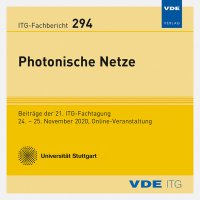Security Gap Investigation of Multilevel Coding in Coherent Fiber-Optical Systems
Konferenz: Photonische Netze - 21. ITG-Fachtagung
24.11.2020 - 25.11.2020 in online
Tagungsband: Photonische Netze
Seiten: 7Sprache: EnglischTyp: PDF
Autoren:
Pfeiffer, Johannes; Fischer, Robert F. H. (Institute of Communications Engineering, Ulm University, Ulm, Germany)
Schmidt-Langhorst, Carsten; Elschner, Robert; Frey, Felix; Emmerich, Robert; Schubert, Colja (Fraunhofer Institute for Telecommunications, Heinrich Hertz Institute, Berlin, Germany)
Inhalt:
In fiber-optical communication systems, security against wiretappers is of increasing importance. To counteract successful eavesdropping, classical encryption schemes may be complemented by approaches following the concept of physical-layer security, e.g., the application of suited coding and modulation schemes. We study the security quantified by the security gap metric (which should be minimized) in a wiretap scenario by using an experimental state-of-the-art coherent laboratory setup with gross bit rates up to 768Gb/s utilizing up to 64.0-GBd dual-polarization (DP) 64-ary quadrature amplitude modulation (QAM). Offline processing of captured waveforms allows the investigation of different signal point labeling and coding strategies. Especially the concept of multilevel coding (MLC), where the secret information is exclusively communicated over the lowest bit level, yields significantly smaller security gaps than bit-interleaved coded modulation (BICM) if the same punctured low-density parity-check (LDPC) code is utilized. An increase of the constellation cardinality, which has been shown to further decrease the security gaps in simulations, results in increased implementation penalties in practical systems. This is especially pronounced at high symbol rates, as MLC requires the legitimate receiver to operate at smaller pre-FEC error rates, i.e., larger signal-to-noise-power ratios. To this end, the security of MLC modulation schemes are experimentally investigated for various signal constellations and symbol rates. A security increase compared to BICM schemes is possible for most examined system configurations.


